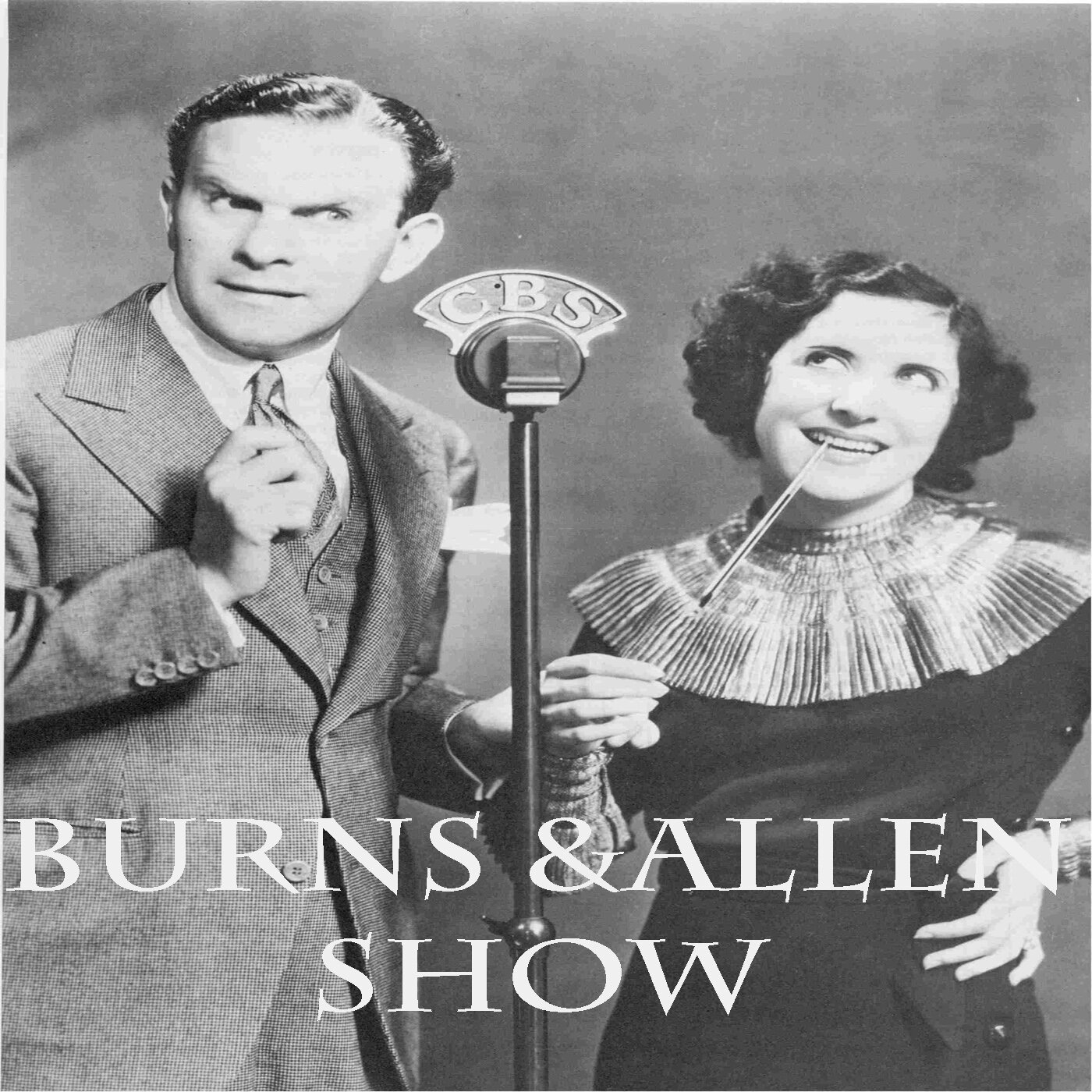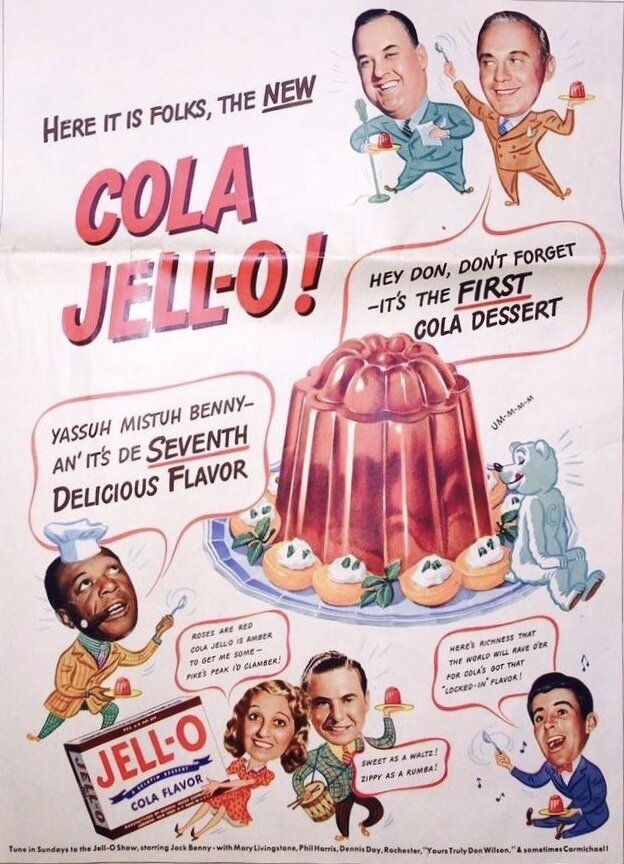Jack Benny and the History of Radio Comedy: An Interview with Kathy Fuller-Seeley (Part Two)
/One of the shifts I observe is a change from the focus on performers to characters. Even the announcer and the members of the band become characters without losing their ability to function in their more traditional roles. The development of bandmembers as characters looks forward to late night television, for example.
I think that you are absolutely right, Henry, that the Benny radio show (and his TV years) lend themselves to connections to late night talk-show television in the vein of Johnny Carson’s “The Tonight Show,” and all who have followed him. Johnny moving from his opening monologue to ritual kidding of the announcer/second banana Ed McMahon, to making jokes about the bandmembers, to interweaving interviews with guests, with occasional comedy commercials and short humorous skits involving Carson himself. Carson always spoke about his huge admiration for Jack Benny and Fred Allen as mentors for comedy writing and performance. Carson’s alma mater the University of Nebraska has even digitized Carson’s senior thesis, a 45-minute audio presentation that he made in 1949 on Benny and Allen in radio comedy, “How to Write Comedy for Radio.” It’s worth a listen.
How might you compare the relations of Jack Benny and Mary Livingstone to other husband-and-wife comedy teams, a tradition best remembered today in terms of Burns and Allen, but wide spread in vaudeville and radio comedy?
I think that the Jack Benny/Mary Livingstone duo offered radio listeners in the 1930s a different “twist” on the typical husband and wife pairings of radio and film (more like a serial continuing of a combative comedy relationship than devoted marital bliss). Mary (Sadye Marks Benny) joined the Benny/Canada Dry radio program July 27 1932, after its first 13 weeks on air, as a young woman from small town New Jersey who had a crush on Jack the radio performer. In the next 3 months they flirted and even eventually professed their love for each other (as is detailed in a new volume of published scripts from these “lost broadcasts.”) But Benny and his writer Harry Conn, found they felt that they had just written the show’s narrative into a corner, so they shifted gears and retreated -- Mary remained on the show as Jack’s pseudo-secretary handling fan mail, but they did not date further. From 1933-1938 or so, Jack and Mary were among the top couples in radio broadcasting (as described in the radio fan magazines, who lavished detail on their new California home, their married relationship off-mike and adoption of their daughter Joan), However on the air Mary was limited to being known as his dimwitted heckling sidekick. When singer Kenny Baker joined the program in 1937, Benny and Conn made his character oafish, and consequentially, the Mary character became sharper in her criticisms of Jack’s foibles. When Eddie Anderson as the Rochester character joined as Benny’s valet and home companion in 1939, Mary’s character became more independent and acid-sharp in her comments. The Jack/Mary relationship (IMHO) was something like the sparring of screwball comedy films in which the female is the smart puncturer of the pretentions of the male boasting windbag. Yet the Benny show radio narrative never comes to the conclusion of coupling at the altar and taming of the woman. The Mary character becomes more distant and brittle in the 1940s (which has something to do with Mary Benny’s own increasing anxiety in front of the microphone) and faded out in the early1950s on the radio, replaced by the close relationship between housemates Jack and Rochester. She would appear only rarely on Benny’s television program, limited to a few times in the mid-1950s when the shows were filmed instead of live.
It’s worth noting that in the 1930s, there were not many radio comedy “married couples” to emulate (the idea that we get from sitcoms from the 1950s onward). While there were talkative husbands and wives in the morning breakfast programs. and in the afternoon soap operas, but there were few in the randy world of radio comedy. In the 1930s, George Burns and Gracie Allen’s characters (who appeared as a team in vaudeville, radio and film) were NOT written as married. Gracie chased after men in a crazy desirous way, while George wryly commented on her transgressions. Radio fan magazines meanwhile presented a different narrative, providing lots of detail about their happy private married lives and the children they adopted. It was only in about 1940, with their radio ratings slipping, that George and Gracie changed their radio narrative and had them become a married couple. They felt that listeners felt they had “aged out” of accepting them in the dating age, and being a married couple refreshed their humor, for years to come. Fred Allen and Portland Hoffa were also featured in the radio fan magazines as a top radio comedy couple, but she always played the role of a 13-year-old fan visiting the show (which led Fred to make occasional wry commentary about what the censors would do with dialogue about them staying in hotels together).
Among the domestic radio comedies of the 30s and 40s,” Fibber McGee and Molly” were perhaps the most prominent married couple on radio in its “golden age”, with Fibber getting into trouble with some crazy get-rich scheme and redoubtable Molly responding with an “Oh, Dearie.” “Vic and Sade” and the “Easy Aces” were also married couples on radio traversing domestic issues.
“The Goldbergs” and “Amos n Andy” also of course joked about married life, but not in the way we think of in terms of male-female comedy teams. The “Ethel and Albert” 15-minute daily program written by Peg Lynch in the mid-1940s, was among the very first domestic narratives to be labelled as a “situation comedy” by radio critics (John Crosby and Jack Gould), along with “Life with Luigi”, “My Favorite Husband” (starring Lucille Ball in a role similar to her TV work) and the hugely popular “Adventures of Ozzie and Harriet.”
For contemporary consumers, even for many in the advertising industry, the ways that the concept of integrated advertising is often a surprise. What are some of the ways that Benny and the others in the cast engaged with the sponsors around the program? How might we compare these approaches to more contemporary forms of product placement?
Commercial advertisements were the absolute bane of radio for listeners from the 1920s through the 1950s. (Fifties television inherited that same annoying structure). Bleating, blaring, loud and noisy commercials that listeners could only avoid by switching the set off or twisting the dial were the heavy price American audiences paid for “free” entertainment. Kathy Newman has charted the wide public outrage and campaigns mounted by consumer groups and federal agencies to try to limit the incessant ads. Cynthia Meyers examines the huge role ad agencies played in adapting print advertising to the aural medium, creating and formatting the American system of radio broadcasting, and its creation of program content as well as ads.
Jack Benny found himself between these two forces, trying to cajole audiences to tolerate the ads and wrestling with ad agencies and sponsors for the creative freedom to have the commercials in mid-program not constitute such a jarring disruption. I think this is a particularly “fun” media industries research topic, as Jack Benny quickly became known in ad agency circles as the “best salesman” in network radio. His first three sponsors, on the other hand, were appalled at Benny and writer Harry Conn’s attempts to combine humor and advertising, and each sought to fire him. I am currently publishing the scripts from Benny’s first 2 years on radio (which do not exist in recorded form), and even reading the Canada Dry commercials that Benny and Conn wrote is slightly shocking and hilarious. The upper-crusty “champagne of ginger ales” was connected with cannibalism, torture, and illegal liquor consumption. The company was horrified and wanted to fire Benny immediately, but their ad agency N.W. Ayer&Sons noted all the positive mail they were receiving, with delighted listeners complimenting the humorous ads.
In Fall 1934, Benny’s liberal sprinkling of jesting Jell-O references into his new show took a declining old grocery product and turned it into one of the largest-selling packaged foods in America, launching a pop culture phenomenon. Ironically, General Foods wished to move him out of Jell-O to sell the much more mundane Grape Nuts cereal in 1941, but Benny was having such fun with gelatin jokes that he refused to go. Only sugar rationing at the start of World War II and lack of product on the shelves forced Benny to switch products, and he soon parted ways with the corporate sponsor.
Benny and his writers tackled a huge challenge with the program’s new sponsor in 1943, Lucky Strike cigarettes. Lucky Strike commercials were infamous as the most obnoxious of all American radio ads, the very essence of “irritant advertising.” Company president George Washington Hill insisted on the horrific, shouted prattle, claiming that even if listeners hated the commercials, they definitely remembered the name of the product. In my opinion, Jack Benny and his writers worked a miracle – they devised a new addition to the comedy program in 1946, a comedy singing quartet supposedly managed by announcer Don Wilson, whose job it was to sing a popular tune with lyrics adapted to tout the praises of Luckies. The Sportsmen Quartet were brilliantly insane -- manically energetic and always losing control in a chain-reaction musical crash of whoops and hollering, causing Jack to lose his temper and scream at them to stop. The pandemonium was one of the first new comic inventions network radio had seen in several years, and critics and audiences adored it. What I appreciate about the Sportsmen’s commercials is that their song lyrics take the same obnoxious advertising slogans heard at the start and end of each Benny show (LSMFT!) and turn them into gibberish. Apparently, GW Hill thought the comedy commercials were fine, as he was pleased to see his ad slogans repeated (Hill died soon afterwards, but his minions allowed the Sportsmen to continue.) Perhaps audiences found the songs and performances to be a kind of delicious nonsense that took some of the sting out of the obligatory “irritant” ads.
All throughout Jack Benny’s radio career, he and his writers took the sponsor’s product and turned it into joking by-play that was thoroughly enmeshed in the show’s narrative; the products became comic elements of the show through repetition and playing up the enjoyable part of drinking soda pop or eating fruity gelatin desserts (or even smoking). Ad executives at various times tried these same tactics with other products and other performers, but failed again and again. There was some kind of alchemy between Benny’s mode of comedy and the products he was asked to promote. I am not sure, that as hard as any advertiser might try, that a similar convivial integration could ever happen today in media – perhaps we consumers are far too cynical now to put up with it. But I do have a CD in my car with Sportsmen’s comedy commercials clipped from Benny’s shows, that I listen to when I want to sing along and laugh.
Meyers, Cynthia B. A word from our sponsor: Admen, advertising, and the golden age of radio.
Newman, Kathleen M. Radio active: Advertising and consumer activism, 1935-1947.
Kathy Fuller-Seeley is the William P. Hobby Centennial Professor of Media Studies in the Radio-TV-Film Department at the University of Texas at Austin; her research specializations are in US radio, film and TV history. Recent publications include: Jack Benny and the Golden Age of American Radio Comedy (California 2017);“Archaeologies of Fandom: Using Historical Methods to Explore Fan Cultures of the Past,” in The Routledge Companion to Media Fandom (Routledge 2018); and (edited) Jack Benny's Lost Radio Broadcasts, Volume One: May 2 - July 27, 1932 (BearManor 2020).







